Washed rose summer and sun rose summer Panama Emerald Manor Washed rose summer and sun rose summer flavor difference
In the front street coffee, rose summer this variety can always attract the attention of guests. Many new friends in the coffee pit heard his name before the beans, sitting at the bar and pulling the barista in front of the street to understand the characteristics of the bean, and the barista in front of the street also answered each guest's questions patiently. The rosy summer coffee beans on the front street come from Ethiopia, Panama and Costa Rica. the rose summer grown in each region has a different flavor, but the floral fragrance of this rose summer can always be reflected wherever it is planted. With the development of boutique coffee, more and more treatments are used to treat Rosa coffee beans. This time Qianjie Coffee will talk about the difference between the two traditional treatments of Rose Summer Coffee beans, which are tanned and washed.
Rosesia variety
Rose summer refers to a variety of coffee, called "Geisha/Gesha" in English, and happens to have the same name as "Geisha" in Japanese, so some people call it a geisha.
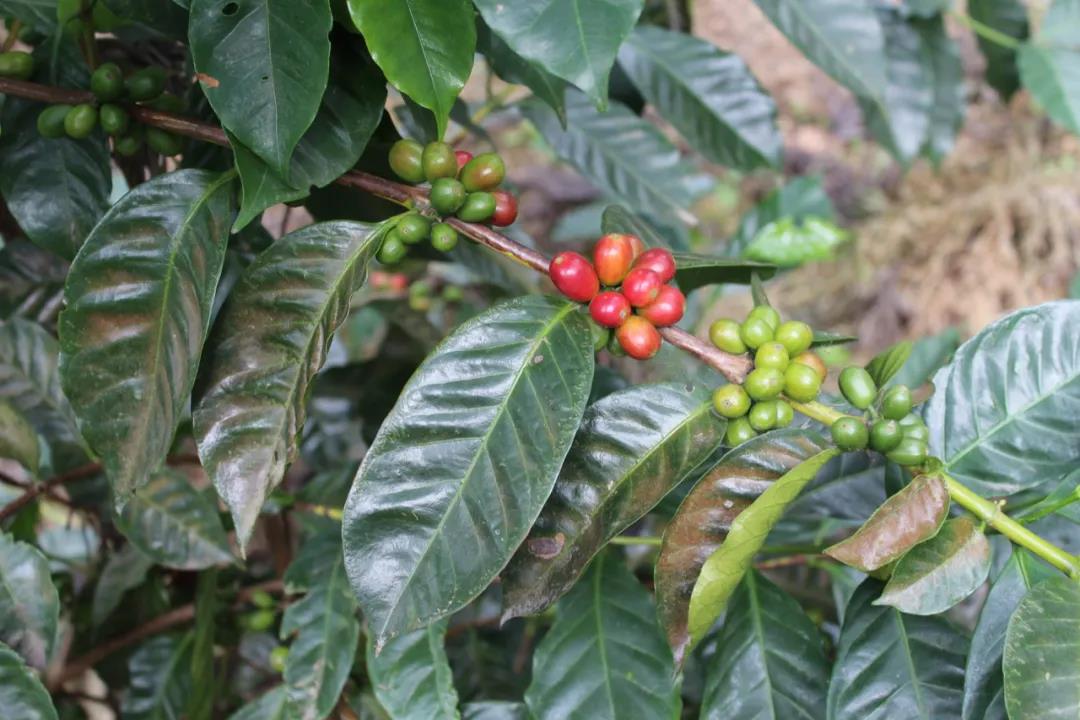
The variety Geisha was discovered in the forests of Ethiopia in 1931. Rosa was then sent to the Coffee Institute in Kenya, introduced to Uganda and Tanzania in 1936, Costa Rica in 1953 and Panama in 1970.
At first, little attention was paid to Rose Summer, until the Panamanian Emerald Manor, also known as Panama Geisha Hacienda La Esmeralda, separated it from other varieties in 2003 and became the champion of the BOP competition in 2004. The rose summer variety officially entered everyone's line of sight.
Although the flavor of Rosa Variety is exquisite, such an elegant flavor comes from a specific planting environment. Rose varieties are very picky about their growing environment and are required to be planted in areas with high altitude, cloudy shade or a large number of shade trees and fertile soil. High-altitude rose summer coffee with obvious floral aroma, delicate and elegant fruit acid, such an elegant flavor is also one of the reasons why it is popular all over the world.
Washing more fermentation process, but also cleaning cleaner, refreshing acidity increased. In the sun, due to the preservation of part of the pulp, there is more berry flavor, the taste is more sticky and full. Washing removes the sticky pulp from the coffee beans before drying, which ensures that it does not over-ferment or produce more mold when it is dried, and the cost of washing is higher than that of tanning.
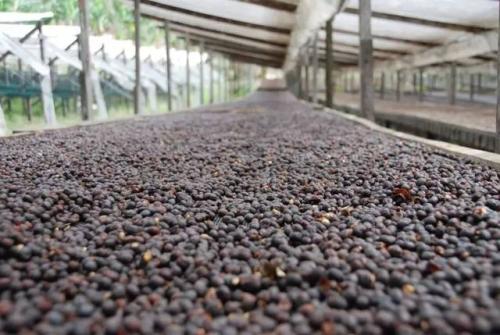
The difference between the two is:
1. Under the same treatment, sun beans will take away the obvious dry aroma of red wine, while washed beans are citrus honey fruit aromas.
2, both products will have obvious sour taste, similar to lemon and citrus fruits, but sun beans are more mellow. The red wine flavor in the dried beans is not obvious in the finished product.
3, the acidity of the washing treatment will be brighter, like citric acid, the taste will be more delicate, the citrus flavor will be more obvious; the sun will be more mellow, commonly known as the coffee will be more bitter, the taste will be much stronger.
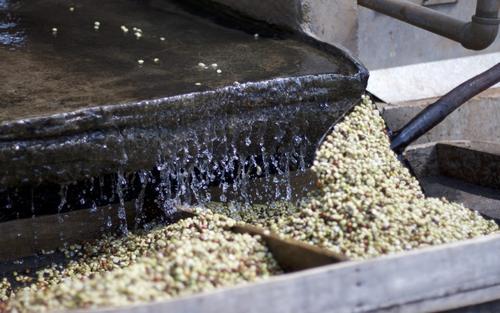
Washed Rosa Coffee has a brighter acidity, with obvious jasmine aroma, citrus bright acidity, sweet and sour berries, clean and refreshing to drink. On the other hand, the sun-dried Rosa coffee has an obvious aroma of roses, berry juice and fermentation to make the coffee smooth and full-bodied.
Representative coffee-Panamanian Jade Manor Sun Red label Coffee & Emerald Manor Water washed Green label Coffee.
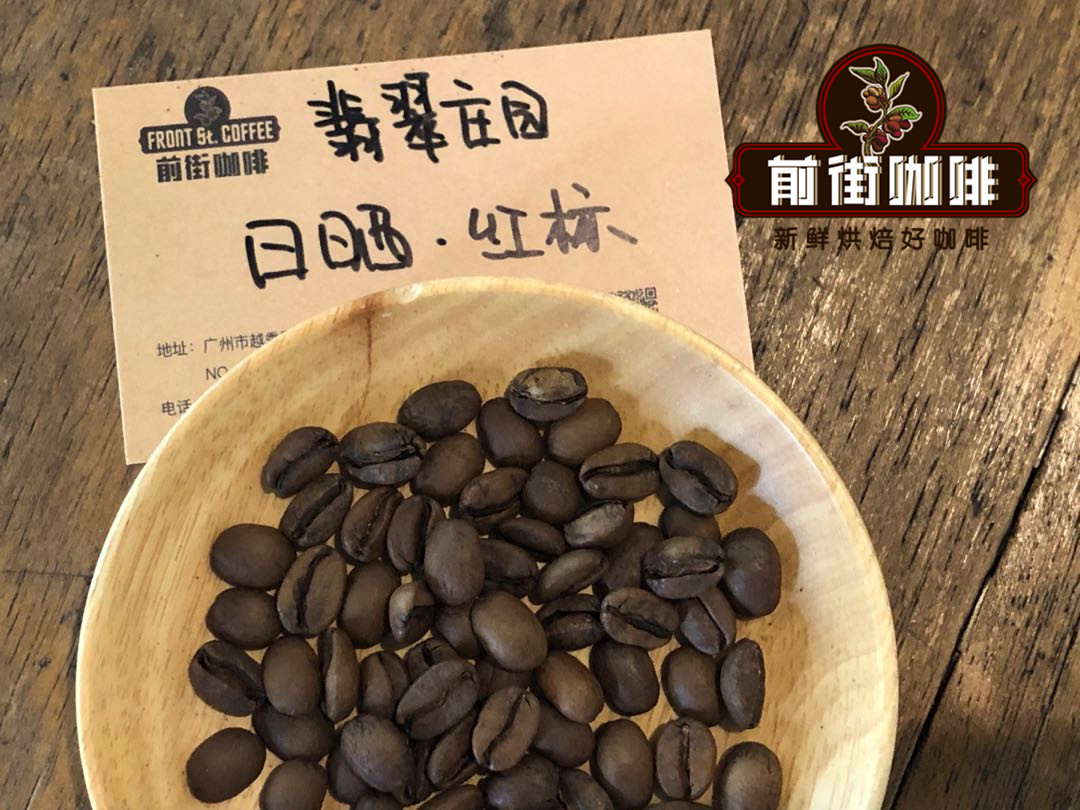
Jadeite Manor Red Standard Rose Summer
The rosy summer specially selected by the Emerald Manor is the red sign we often hear. Select rose beans from two producing areas, Jaramillo and Ca ñ as Verdess, with an altitude of 1600-1800 meters and a cup test score of more than 90 points.
The independent bidding held by the Jade Manor itself, in the divided plots, the Rose Summer batch that was put forward for bidding is the red bid. However, there are also non-competitive red bids on the market, that is, the rose summer which is selected from the same plot and then circulated to the market, the varieties and quality are the same, but there are differences in the price.
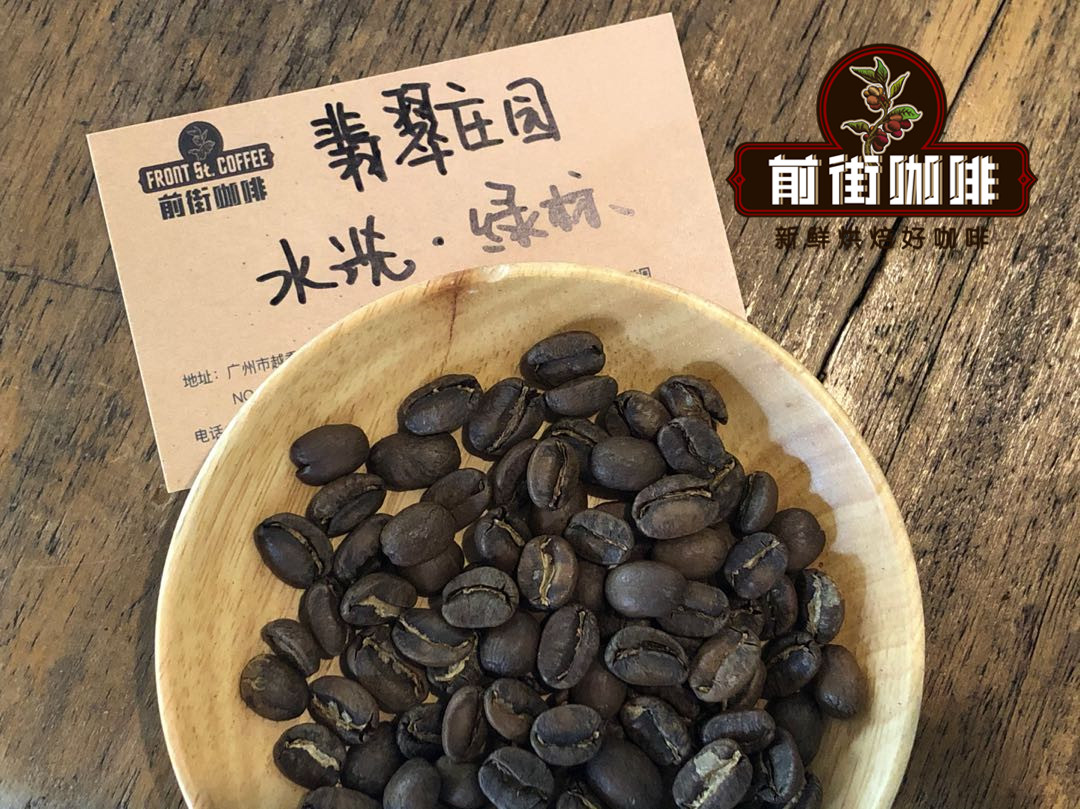
Jadeite Manor Green label Rose Summer
Private collection, commonly known as green standard, is not a batch of independent competitions, planting rose summer varieties that do not participate in bidding but are still of excellent quality. Select micro-batch mixed beans from different plots, such as Jaramillo and Ca ñ as Verdess, which are planted at 1600-1800 meters above sea level.
Due to the use of mixed bean mode, there is no detailed indication on the plot, so sometimes the flavor similarity between green mark and red mark is very high, but the next production may be different.
How to brew two kinds of Jade Manor Rose Summer Coffee
Qianjie Coffee when roasting Jade Manor Rose Summer Coffee, in order to retain the rich floral aroma, berry juice and honey sweetness of Rose Summer, the shallow baking in Qianjie highlights the characteristics of Rose Summer. The suggestion for shallow baked beans is 90-91 ℃. The aroma and acidity of shallow baked beans can be extracted with higher water temperature, because the quality of shallow baked beans is hard, and increasing water temperature can increase the extraction efficiency of coffee powder and avoid unpleasant flavors such as acidity.
Qianjie cooking parameters:
Water temperature: 90-91 degrees
Powder content: 15g
Degree of grinding: degree of grinding of fine sugar
The front street uses V60 cooking, V60 tapered filter cup mouth is relatively large, coupled with its unique spiral curve ribs, so that the air can be discharged more easily to improve the extraction quality. The taste may not be thick enough, but its high concentration of sweet and sour and obvious aroma is a major feature of it.
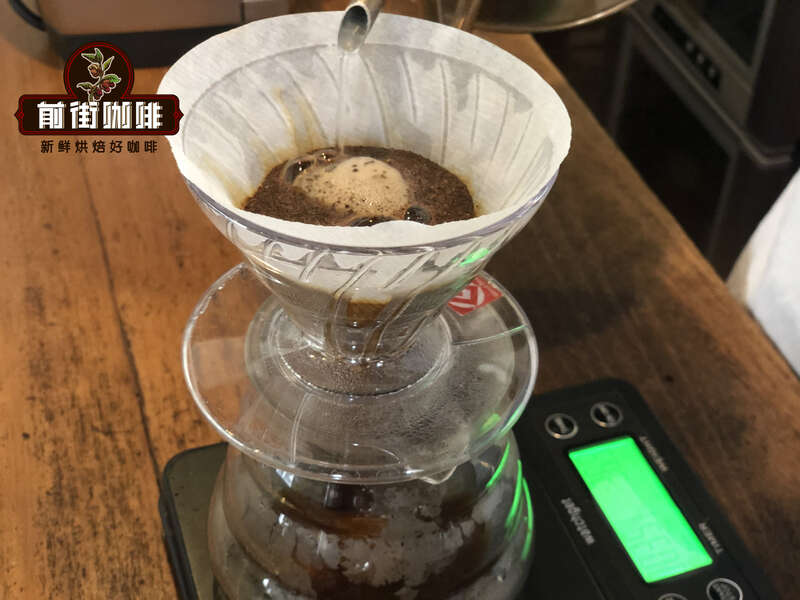
2: 03 "trickling is completed, remove the filter cup and complete the extraction.
Sun red standard cooking flavor: there are bright roses, citrus aromas, black rice, berries, apricots, compound fruits, honey, thick juice, rich flavor levels, sweet and obvious.
Washing green standard cooking flavor: imported jasmine fragrance, high sweetness, citrus, berries, juice, cream, green tea, orange peel, cantaloupe, the overall flavor is rich, aftertaste, citrus lasting.
Important Notice :
前街咖啡 FrontStreet Coffee has moved to new addredd:
FrontStreet Coffee Address: 315,Donghua East Road,GuangZhou
Tel:020 38364473
- Prev

How to cook red cherry by hand & red honey to treat red cherry coffee beans
In the front street cafe, a dazzling variety of coffee menus, Ethiopia's Yega Sheffield has always been loved by every coffee lover. On the menu bar in Ethiopia, red honey red cherries and sun red cherries written in the first and second line are particularly eye-catching. This time Qianjie Coffee will talk about what is red cherry and what is the difference in the flavor of red cherry coffee with different treatments. Yega
- Next

Ratio of latte to milk coffee hot latte ice latte espresso to milk
Whether the latte, a seemingly simple cup of milk coffee, tastes well or not has led many people to decide whether this coffee shop is a reference drink for a good coffee shop. The latte of Qianjie Coffee has always had a strong whisky aroma, and the smooth taste of vanilla cream has always impressed the guests. A good cup of espresso can make a person remember a shop, so how to make it good?
Related
- Beginners will see the "Coffee pull flower" guide!
- What is the difference between ice blog purified milk and ordinary milk coffee?
- Why is the Philippines the largest producer of crops in Liberia?
- For coffee extraction, should the fine powder be retained?
- How does extracted espresso fill pressed powder? How much strength does it take to press the powder?
- How to make jasmine cold extract coffee? Is the jasmine + latte good?
- Will this little toy really make the coffee taste better? How does Lily Drip affect coffee extraction?
- Will the action of slapping the filter cup also affect coffee extraction?
- What's the difference between powder-to-water ratio and powder-to-liquid ratio?
- What is the Ethiopian local species? What does it have to do with Heirloom native species?

